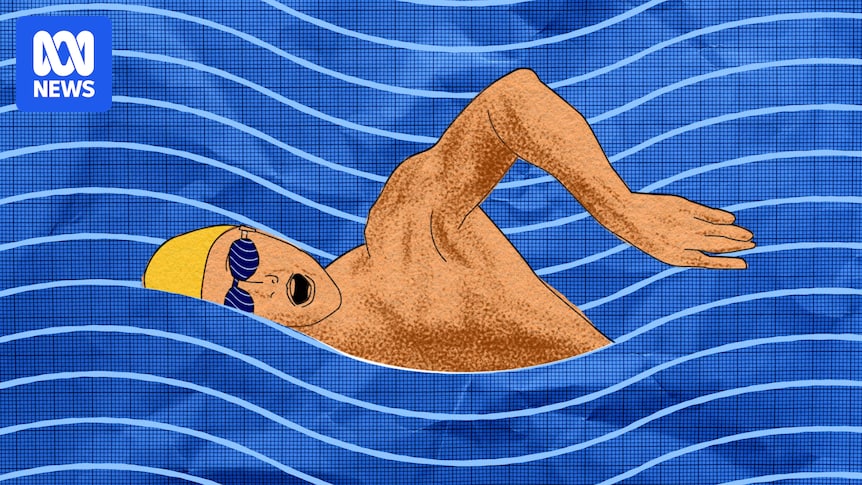
It takes just one breath. The moment Cameron McEvoy launches himself from the blocks, he exhales, then takes a short, sharp breath as he flies through the air. For the next 21 seconds, there are no more breaths as he breaks the water’s surface, glides underneath, and emerges with arms and legs in perfect harmony, powering him through a 50-meter freestyle lap.
Years of stretching every tendon and testing every joint in the gym, combined with relentless pool training, all culminate in those 21 seconds. From the stands or in front of the TV, it appears as a chaotic blur of limbs and white water. Yet for McEvoy, every moment is meticulously orchestrated to achieve perfection.
“I’m basically in the hunt for perfection,” he says.
The Quest for Perfection
McEvoy is arguably the best 50m freestyler in the world. He clinched the gold medal at the world championships in Fukuoka in 2023 and followed it with a victory at the Olympic Games last year. At the Australian Swimming Trials in June, he leaped out of the pool after winning the 50m freestyle in 21.3 seconds, calling it a “pretty nice swim.” This time remains the fastest going into the world championships in Singapore, yet McEvoy seeks more.
“I’ve got that [Olympic] gold medal, and I’ve got the world championship gold medal. I guess you could say the chip is off the shoulder, or the leash is off, and I feel like I have free rein now to go after a time,” he tells ABC Sport.
His journey now is to blur the lines between sport, science, and art until they become indistinguishable. Much has been made of McEvoy’s academic background in mathematics and physics, earning him the nickname “The Professor.” This scientific mindset has equipped him to critically analyze his approach to swimming faster than anyone before him.
Revolutionizing Training Techniques
McEvoy began by discarding traditional training methods, examining the techniques of other power athletes to see what could be adapted for swimming. “You need to have the fitness to be able to sprint for 50m,” he explains. “You need to have the strength to apply that force to the water, and then you need mobility to perform the freestyle stroke without fighting your body’s limitations.”
Instead of long hours in the pool, McEvoy focused on gym work, swimming only two or three kilometers weekly but always at maximum intensity. His concept was to view the 50m as a series of individual components. For instance, his personal best swim of 21.06 seconds that won him the world title two years ago.
“The way I break it down is you have your first 15-meter segment, and then you have your swimming part afterwards, which also can be broken down into its various components,” he says.
McEvoy’s first 15m in Fukuoka took 5.22 seconds—slower than his competitors. He believes shaving 0.2 seconds off that start could propel him into world-record territory.
The Science of Speed
McEvoy devoted six months post-Olympics to strength training to improve his dive. “It boiled down to two things: take-off velocity off the block and the ability to get into streamline,” he says. This involved endless squats, hamstring curls, and lower back strength work, balanced with mobility improvement.
“My best vertical jump a week-and-a-half out from Paris was 56 centimeters, and this year I hit 62 centimeters,” he notes. “That’s a massive gain just in vertical jump.”
His improvement was evident at the Australian Swimming Trials in Adelaide, where he was 0.2 seconds quicker to 15m than in Fukuoka. The next mission is to refine the remaining 35 meters after the dive’s momentum fades.
Chasing the Impossible
The world record of 20.91 seconds in the 50m freestyle, set by Brazilian Cesar Cielo, remains one of the few from the supersuit era. McEvoy believes this time is “theoretically” within reach.
“If you take my best start to 15m and my best 15m to 50m and combine them, I’m 0.02 under the world record,” he says.
Yet, perfection is elusive, especially across heats, semifinals, and finals. McEvoy aims for consistent excellence, striving for an “average” performance that is exceptionally high.
A Harmonious Blend of Passions
McEvoy equates his training to artistic endeavors, likening it to a musician composing or a painter transforming a canvas. “The medium is myself, as a human being,” he reflects. “And just like a lot of science is used in creating music and art, I can’t differentiate it.”
At 31, McEvoy is not in a hurry. He has a life outside the pool, having recently married and welcomed his first child. His physics thesis is on hold, but his passion for swimming, science, and art continues to drive him.
“I’m very passionate about what I’m doing, not only for personal reasons and achieving what I want to achieve in the water but also with how the ideas I’m bringing to the table will continue to change the sport forever,” he says.
As McEvoy prepares for the world championships, his journey is a testament to the seamless blend of art, science, and sport, with much left to discover.





